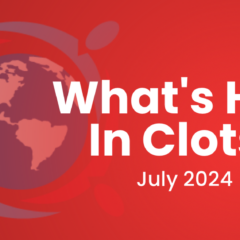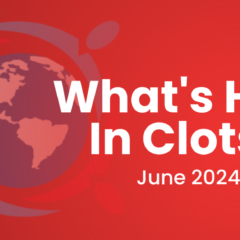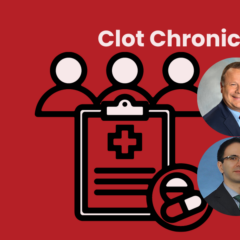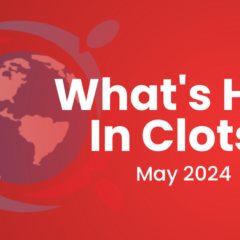Last updated on
Clot Chronicles: VTE Risk and Gender-Affirming Therapy – A New NATF Action Initiative
Hi, I’m Dr. Robbie Goldstein; I use he/him pronouns. And today on Clot Chronicles, I’m going to be talking about our project related to gender-affirming hormone therapy, gender-affirming surgical therapy, and the risk of venous thrombosis. I should say that I’m a physician at Mass General Hospital and the Medical Director of the MGH Transgender Health Program, a primary care practice that also helps trans folks navigate our hospital to receive gender-affirming care from surgery, psychiatry, and many of the other departments across the hospital.
This is a really important topic for so many of the patients that I see every day. You know, we see patients who come in each day looking to start gender-affirming hormone therapy and with each of those visits, we have a conversation about the risks and the benefits of hormone therapy. When we talk specifically about estrogen therapy, we oftentimes will mention that there’s a theoretical risk of venous thromboembolism (VTE). We don’t actually know the exact risk associated with each formulation of estrogen that we prescribe to our patients, and we don’t know if there’s a risk for testosterone hormone therapy for trans individuals. Part of this is because we don’t have a robust data source to understand exactly what is happening in the trans population – but we do have a tremendous amount of clinical experience. And what’s amazing about this project is that we’ve brought together clinicians, providers, and folks from the trans community from all across the country, representing completely different parts of the country and different interests, to have a really robust conversation about what the actual risks and benefits may be.
What’s exciting to me is that we’ve brought together a group of individuals who care for older trans folks and younger trans folks, people who are involved in the surgical process and medical care, people who think about mental health, and people who think about all aspects of care for the trans community. Our hope is that through this conversation and in us producing a document, we can help clinicians across the country provide better care to folks in the trans community.
We want to make sure that this is useful to clinicians, but also we want to make sure that this is done in collaboration with and working incredibly closely with the trans community itself. We’re really lucky to have members of the trans community join us in this discussion and in production of our manuscript. We’re also hopeful that once this manuscript is submitted and disseminated, we’ll be able to turn it into patient education documents and even more products that we can share with trans folks all across the country to help them understand what their VTE risk may be, and how they might be able to navigate the conversation with their own clinician about starting hormone therapy or about going through gender-affirming surgery.
So this is, I think, a unique opportunity that we have. I’m really grateful to NATF for giving us this opportunity. I think it’s something that will clearly fill a hole in the medical literature and allow us to provide better care to so many patients. So, I encourage you to check back and to see what we’re able to produce to give us your suggestions and your feedback, so that we can create the best resources possible for the trans community.
And with that, I will say thank you for joining today on Clot Chronicles. And I’m really looking forward to working with you and to sharing with you what we’re able to accomplish.



